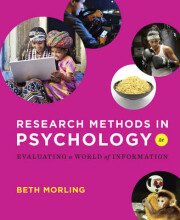Summary: Psychological Assessment
- This + 400k other summaries
- A unique study and practice tool
- Never study anything twice again
- Get the grades you hope for
- 100% sure, 100% understanding
Read the summary and the most important questions on Psychological assessment
-
college 1
This is a preview. There are 15 more flashcards available for chapter 31/03/2020
Show more cards here -
What do phrenology and physiognomy have in common?
They are both operationalizations of the idea that the exterior, looks etc. Are an indication of a persons personality and intelligence. -
How do we call a study that states that personality and intelligence can be determined from the shape of the skull, implying that the growth of certain brain parts causes the skull to take a certain shape?
Phrenology -
Give a timeline of psychological assessment
2200 B.C. People were tested to determine their fitness to work for the Chinese emperor- Around
18th century: the outside is an indication of the inside,physiognomy ,phrenology - Late
19th century: "copper era". Perception and response speed becomeindicators of intelligence. They were determined by machines hence the copper era - Early
20th century: first intelligence tests as we know them today - Early
20th century: Personality can be determined through projection. By letting people react tounstructured stimuli people will answer based on instinct which will show personality
-
What are some biases to watch out for in psychological assessment?
- Blind spot bias
- salience effect
- contrast error
- illusory correlation
- confirmation bias
- fundamental attribution bias
- Blind spot bias
-
How do we call the tendency to overestimate the influence of dispositions (traits) and to underestimate the influence of situational factors (states, reaction to situation) in judging peoples behavior.
The fundamental attribution bias -
How do we call only search for and pay attention to information that is consistent with one's own conclusion; ignore or selectively interpret hypotheses, beliefs and conflicting information
The confirmation bias -
How do we call giving more weight to striking information than non‐striking information when drawing conclusions?
Thesalience effect -
How do we call a concept during a performance appraisal of a candidate where his/her valuation is impacted by the fact that the previous candidates were relatively good or bad. It is an error where a person sets a certain benchmark, which affects the appraisal of the candidate being interviewed.
The contrast error -
How do we call it when we perceive links between tests and own conclusion, which do not exist empirically?
An illusory correlation -
What are some solutions to defend yourself from bias?
1. Awareness of the limitations of clinical judgment
2. Include circumstances
3. Think about verification and falsification
4. Take specific instruments that are as reliable and
(ecologically) valid as possible.
5. Think about whether 1 instrument is sufficient.
6. Stay critical
7. Follow hypothesis testing model
- Higher grades + faster learning
- Never study anything twice
- 100% sure, 100% understanding

































